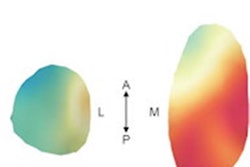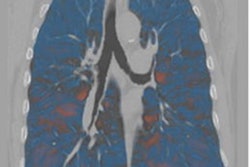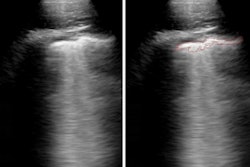Dear Advanced Visualization Insider,
Evidence continues to accumulate pointing to the prognostic value of CT radiomics features in assessing non-small cell lung cancer (NSCLC).
In a presentation at this week's American Association for Cancer Research (AACR) annual meeting, researchers from the H. Lee Moffitt Cancer Center and Research Institute in Tampa, FL, detailed how a single CT radiomics feature was associated with overall survival in NSCLC patients. You can get all the details in this issue's Insider Exclusive.
Quantitative 3D analysis may be able to unlock the value of weight-bearing CT for the assessment of osteoarthritis. Researchers found that 3D maps of the knee joint space width distribution correlated highly with structural joint disease.
The combination of deformable image registration techniques and a deep-learning segmentation algorithm can enable staging of chronic obstructive pulmonary disease, according to another new study. What's more, it can also predict five-year disease progression and mortality.
A quantitative lung ultrasound method was found to be highly accurate for detecting and monitoring COVID-19. In a pilot study, the semiautomated segmentation tool was deemed to be superior to traditional lung texture features and perfectly distinguished between COVID-19 patients and normal subjects.
Meanwhile, quantitative analysis of sequential CT exams with help from an artificial intelligence (AI) algorithm may facilitate the standardized assessment and monitoring of disease progression in COVID-19 patients.
CT radiomics analysis was recently utilized in an attempt to explain an AI algorithm's performance following clinical deployment for triage of suspected intracranial hemorrhage cases. A radiomics-based machine-learning model was able to differentiate bone islands and osteoblastic bone metastases on abdominal CT scans at a level comparable to that of an experienced radiologist.
In other news, virtual surgical planning and 3D-printed models yielded lower complication rates in maxillectomy reconstructions. Patients who had received virtual surgical planning with 3D-printed models for maxillectomies that required microvascular reconstruction had a much lower rate of lateral rhinotomy than a cohort of patients treated prior to adoption of these methods.
Are radiologists interpreting 3D images effectively? After investigating reader performance for 2D and 3D image localization tasks, researchers found little evidence that observers were integrating information as they scrolled through a 3D image. The authors concluded that the results support and help to explain the need for multiple views in 3D image reading.
Is there a story you'd like to see covered in the Advanced Visualization Community? Please feel free to drop me a line.




















